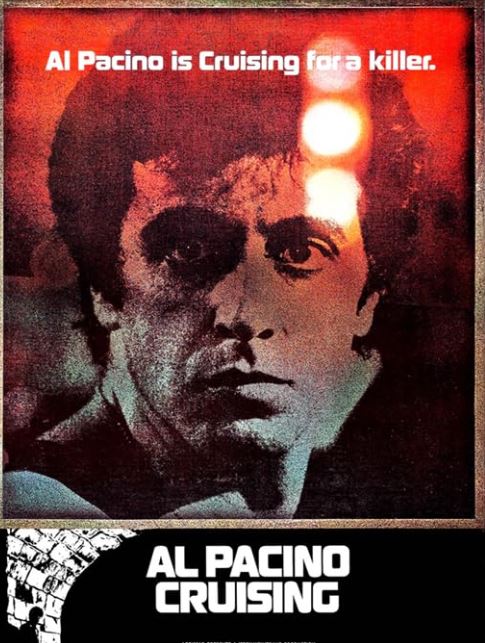
Seriously, what the fuck is up with William Friedkin’s Cruising? That it’s homophobic is beyond dispute, but more than that, its greatest crime is against the very craft of filmmaking. It’s like the anti-movie; lurid and strange enough to warrant a complete viewing, but so disjointed and incomprehensible that it just about flies off the screen. As it doesn’t work as a thriller, or a mystery, or a genuine sociological document, its only purpose is to rub straight America’s nose in a subculture it might know from rumor and innuendo, or perhaps the occasional disco record.
It’s the sort of movie with nutty cameos by Powers Boothe and Ed O’Neill, as well as the greatest concentration of mirrored sunglasses and Fu Manchus in the history of cinema. It’s dark, depressing, twisted, and hopeless, but only as entertainment. Any possible meaning or insight is left on the same dirty floor with the syringes and lubrication. In all, we get at least one fisting, numerous shots of tattooed ass cheek, and a killer who opens the film looking a little like a hybrid of Richard Ramirez and Gene Simmons, only to become someone else entirely, unless of course he’s not really the killer, which is all but implied by the final shot. Even now, I’m not entirely sure. Clearly, though, we’re meant to assume that Al Pacino has turned gay in the span of a month, all because he inhaled the musty odor of an S&M club, and reluctantly agreed to be hog-tied.
Pacino is Steve Burns, an ambitious cop who desperately wants to make detective, even if it means he’ll have to live in the gay underworld while hunting a serial killer. While his superior, Captain Edelson (Paul Sorvino), never actually instructs Burns to “live the life,” it’s strange to think that a man could fit in without actually having to ingest a cock now and again. Burns finds an apartment in the Village, buys a black wife-beater, and manages to look sweaty just about all the time. Funny, that, as from what we see of the gay world, Friedkin’s primary assumption is that homosexuals are covered with sweat twenty-four hours a day, even if they aren’t being rammed from behind or whipped repeatedly on the chest.
The moisture, combined with grimy photography and lighting that renders everyone’s lips a bright red, makes for an unpleasant slog through the leather crowd, which is presented as the unhappiest of experiences. Not only is a self-hating killer on the loose, but these people can’t even enjoy their sexuality. Burns blends right in, though, and with his hair coiffed and jeans ever-so-tight, he works assorted rooms to gather information and the occasional look from the shadows. While he never actually exchanges fluids with a suspect, he does dance provocatively at one point, inhaling glue from a hanky, and gyrating so insanely that it’s a wonder Pacino ever worked again.
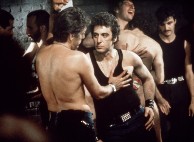
Speaking of hankies — and the previously mentioned Powers Boothe — there is a great little scene, apropos of nothing, where Burns visits a shop that serves no other function than to sell hankies in various colors. Curious, Burns asks the store owner (Boothe) what they mean. According to this gentleman, a light blue hanky in the left back pocket means that a person wants a blowjob. If that same hanky is in the right back pocket, he is willing to give a blowjob. Green, on the other hand, indicates one’s status as either a hustler or a buyer. Finally, there is yellow, which, if tucked in the left side, signifies a desire to give a golden shower.
If on the right, one hopes to be on the receiving end of such things. Unfortunately, the man never has the opportunity to explain red, as Burns leaves in a hurry. While Burns seemed to recoil in the face of this unwanted information, his disgust does not prevent him from stuffing a yellow hanky in his jeans the very next night, prompting an odd young man wearing a flashing belt buckle to approach him. Burns, seemingly surprised by the intrusion, claims that he only likes to watch.
The man erupts, as clearly Burns has violated an underworld code of sorts. Sure, the scene might have something to do with Burns hunting for suspects, but because it’s so out of place and pointless, it’s just as likely that it exists to provide viewers the opportunity to watch Al Pacino get hit on by a guy who wanted him to piss in his face. Six years prior, he was plotting Hyman Roth’s assassination; now, as a new decade dawned, he was slinking about like he was on tour in support of British Steel.
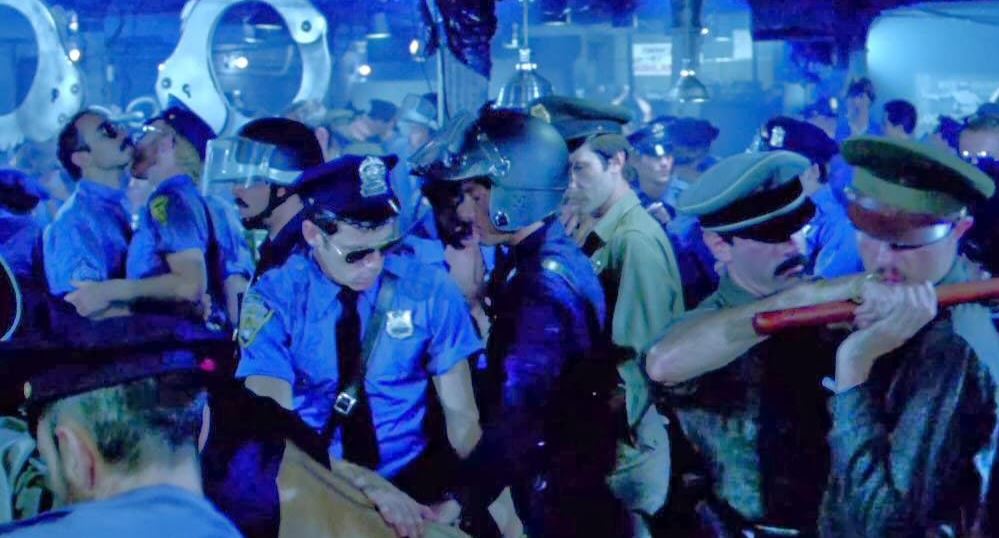
Burns visits quite a few clubs — The Cock Pit, Ram Rod, The Anvil — but none seem to turn up any leads. In the meantime, we see newspaper headlines that proclaim, “Homo Killer On the Prowl,” as well as events called “Precinct Night,” where giant handcuffs adorn a room where everyone paws each other dressed as police officers. Soon, Burns is being hit on right and left. “If that bulge in your pants ain’t a knife,” one asks, “Why don’t we take a walk?” Burns isn’t up for any walks at this time, and to prove it, he runs home to his girlfriend to fuck her like never before. Is he feeling guilty?
Pulled in a direction he never anticipated? Perhaps, but this is hardly the story for such complexities, as few things are going to derail this hate train. According to Friedkin, gays do little but fuck and beat each other senseless, unless of course they are pushed to homicide by long-dead fathers who continue to control their weak minds. We don’t learn about this dubious motive until the end, but with each killing, we hear the killer cry, “You made me do this!” The murders take place in seedy motels, Central Park, and even a peep show, which is an especially awesome scene as the victim is a dead ringer for Jeff Lynne. But before this sick man is uncovered, a red herring must be thrown in our path, all so that we can witness a scene so drunk with nonsense that all by itself, it recommends the movie to future generations.
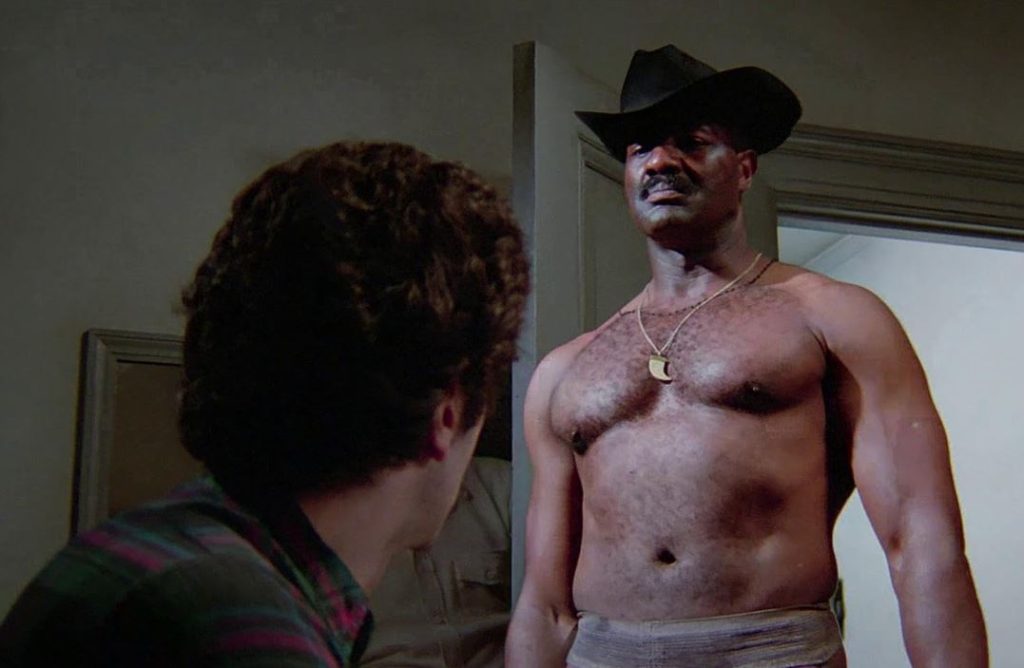
So, Burns has a suspect he believes is the killer. He gets a room, wears a wire, and pushes the would-be killer along as the cops wait in the wings for the signal. The wire cuts out, so everyone rushes in anyway, though too soon to have caught anyone in the act of attempted murder. Burns is immobilized by rope, but nothing illegal has transpired, so the case is weak at best. Nevertheless, the young man is arrested (along with Burns, to keep up the sting), and brought to an interrogation room that appears to exist on the planet Neptune. The usual good cop/bad cop routine ensues, but whenever questioning gets especially heated, a large black man (fuck, at least 6’6”, 300 pounds) wearing S&M attire, and ass fully exposed, pops out from some hidden room and smacks the shit out of the suspect.
He even levels Burns! The mountain of a man is made that much more comical by the fact that he’s sporting a cowboy hat. Who the hell is this guy? He goes unnamed, unidentified, and he only appears when a fist to the chops is required. Is this how the NYPD operates? Did Friedkin drop the script in the East River, forcing a hasty improvisation? As I didn’t know what the fuck this dude had to do with anything, I nearly choked from laughter before he soon disappeared and the movie continued on its merry, maddening way. But the black man haunts me still, and he’s arguably the strangest character I’ve ever come across in nearly three decades of watching movies. Whoever you are, here’s to you.
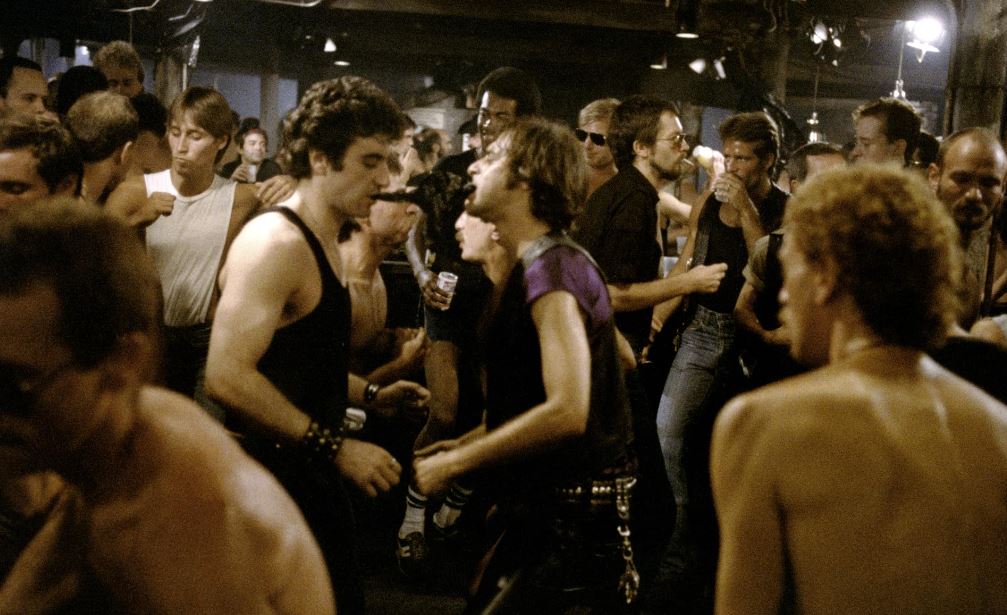
Then, before I can gain my senses, Ed O’Neill shows up again to perform what he calls the “floating ball test,” which I think has something to do with identifying the killer. You see, one of the murder victims was found with ejaculate in his ass, but no actual sperm was present, indicating, well, something fishy about the killer that will be proven by Al Bundy grabbing some hysterical hippie’s nutsack and slamming it in ice cold water.
Alas, the scene moved on before this could occur, and it is quickly deduced that they have the wrong man, I think because his fingerprints do not match those found at the scene of the peep show murder. Though this is clearly not a crack unit, Burns is willing to keep trying, apparently because he’s getting too deep, which he proves by dumping his girlfriend and lifting weights shirtless in front of a mirror while shouting, “Yes! Yes! Yes!” He then follows around some dude who once attended a class taught by one of the murder victims, at one point breaking into his apartment to sniff around his underwear drawer.
Burns also finds Rob Halford’s wardrobe in the closet, along with a box of unmailed letters to some guy in St. Louis. Within seconds, he seems to know that this guy is the killer, so he sets a trap to meet in the park, all by asking the question, “Hips or lips?” Burns’ instincts are correct, though, as the guy pulls a knife, only to find that Burns is also packing, and within seconds, he sends the suspect to the hospital. This leads to a hysterical bedside scene, where Sorvino tells the lad that if he confesses to seven murders, he’ll only get eight years in the big house. Is that all gay lives are worth? Apparently so.
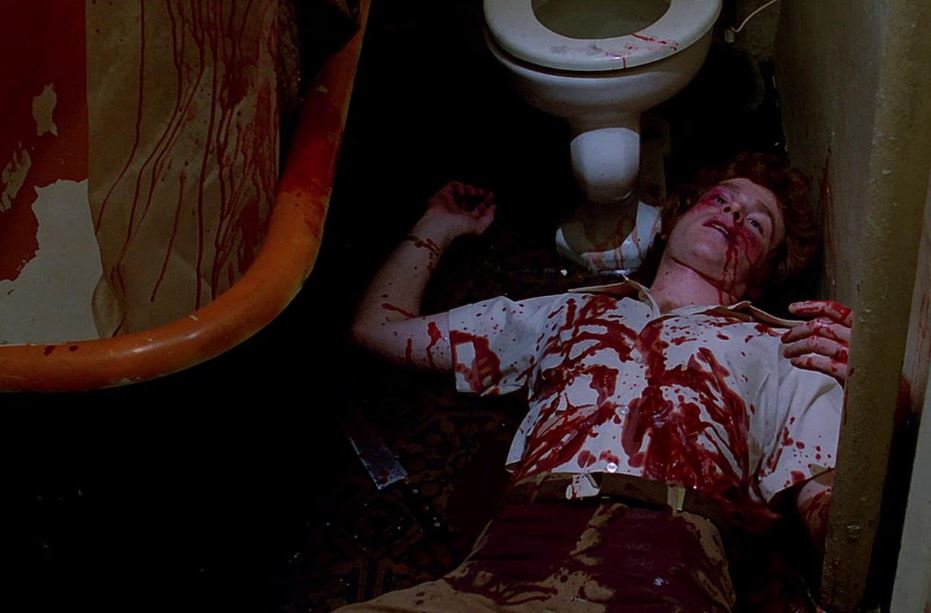
The next five minutes are utter chaos, and I’m not sure I’ll ever understand what went down. Burns beats the shit out of his neighbor’s sassy boyfriend, then the actual neighbor ends up dead, and suddenly, we cut to Burns’ apartment, where he shaves seductively while his girlfriend tries on the leather duds he brought home from the Cock Pit. Burns even looks into the mirror in case we don’t get that he’s now irredeemably gay. Or something. One sloppy edit later, the Simmons/Ramirez guy is back and we’re thinking that some poor slob is going to serve eight years for nothing.
And in a flash, Friedkin’s name appears on the screen, along with an ear-splitting score that is supposed to signal menace, but simply sent me into further hysterics. Was this for real? No wonder gay groups hated this fucking thing. Friedkin had done for homosexuals what he had previously done for Satan in The Exorcist, and there wasn’t a damn thing we could do about it. Years may be kind to this mess and we may one day utter “camp classic” in its presence, but for now, it was enough to be completely floored. I can’t even conceive of a mind who would want to make it, and I couldn’t believe it actually saw the light of day. It was a more innocent time to be sure; when gays channeled their self-loathing and animalistic urges into cold-blooded murder, and studios threw millions of dollars at washed up has-beens to make it happen.